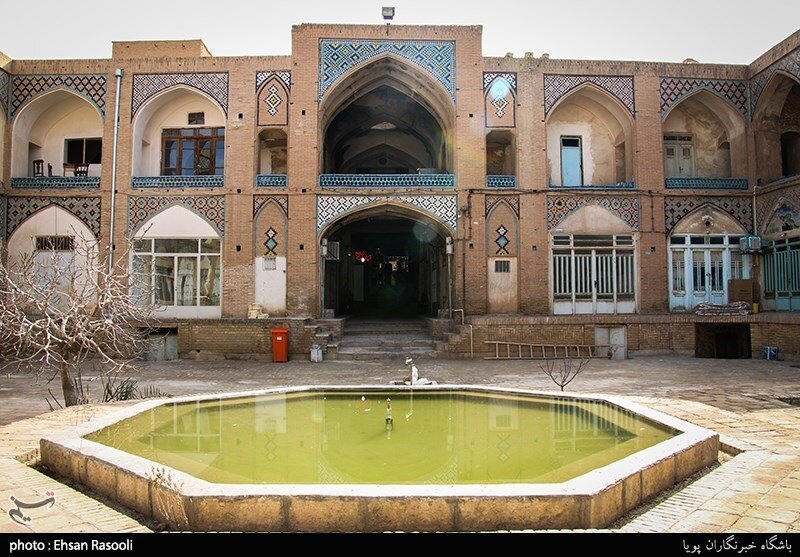Frescos of historical caravanserai restored in Kashan

TEHRAN – A restoration work has recently been completed on the decorative paintings of the entrance corridor of Gomrok Caravanserai in Kashan, Central province of Isfahan, Kashan’s tourism chief has announced.
Due to previous damages caused to this caravanserai, the paintings on the entrance of the main corridor of the building have been restored in two stages by experienced restorers in recent months, Mehran Sarmadian said on Friday.
“The project involved cleaning, stabilizing, strengthening, and balancing the patterns and color of the painting,” the official added.
“Dating back to the Safavid era (1501-1736), the historical inn is a [bustling] section of Kashan’s bazaar.”
With an area of 2,000 square meters, the caravanserai is surrounded by rooms with a courtyard, two entrances, and two exits, and is important from the architectural and decorative viewpoints, he mentioned.
The historical monument was registered on the national heritage list in 2000.
Kashan is a historical city near Isfahan in the central part of Iran. Its history dates back to over ten thousand years ago, and it is home to some of the most beautiful buildings featuring Islamic architecture.
Many travelers opt to pass Kashan on their journeys between Tehran, Isfahan, Shiraz, and Yazd, because this delightful oasis city on the edge of the Dasht-e Kavir, is one of Iran’s most alluring destinations.
Kashan not only boasts a cluster of architectural wonders, an atmospheric-covered bazaar, and a UNESCO-recognized garden, but it also offers some of central Iran’s best traditional hotels.
The annual Golab-Giri (rosewater distillation) ceremony of Kashan attracts huge crowds to the city every year. Some of the most ancient traces of civilization have been discovered near Kashan, at the Sialk archaeological site.
Possible UNESCO tag for Iranian caravanserais
Iran has put forward a selection of 56 caravansaries as a candidate for a collective inclusion in UNESCO’S cultural heritage list.
Last year, the tourism ministry announced that Iran is developing a dossier for a selection of its historical caravanserais for a possible inscription on the UNESCO World Heritage list. In this regard, cultural heritage experts are assessing such monuments that are scattered across the country to make a shortlist in terms of their architecture, historical and cultural values.
Caravansary (also Caravanserai or Caravansaray) is a building that served as the inn of the Orient, providing accommodation for commercial, pilgrim, postal, and especially official travelers.
According to Encyclopedia Iranica, from the number of surviving caravansaries and their sizes, it is clear that in Safavid and Qajar times there was a state architectural department that was specifically concerned with the construction of caravansaries and stations on the overland routes. Furthermore, in the cities, several caravansaries were erected as lodging houses, depots, and commercial offices in the vicinity of the bazaars.
A typical caravansary consists of a square or rectangular plan centered around a courtyard with only one entrance and arrangements for defense if necessary. Whether fortified or not, it at least provided security against beasts of prey and attacks by brigands.
Iran’s earliest caravanserais were built during the Achaemenid era (550 -330 BC). Centuries later, when Shah Abbas I assumed power from 1588 – to 1629, he ordered the construction of network caravanserais across the country.
Such roadside inns were originally built during various epochs along ancient caravan routes in the Muslim world to shelter people, their goods, and animals. The former Silk Roads may be the most famous example dotted by caravanserais.
ABU/AFM

Leave a Comment